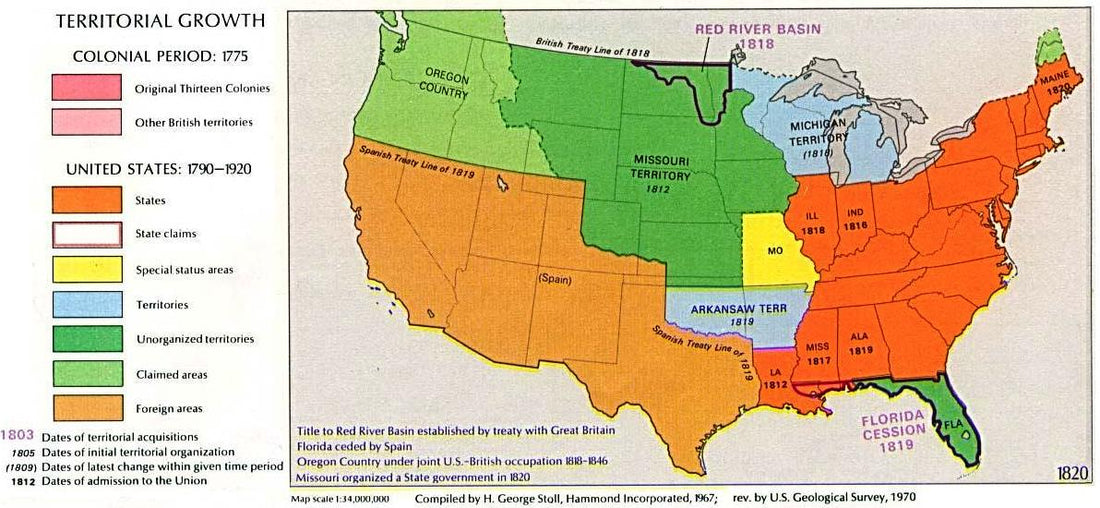
Complete List of U.S. States and Their Admission to the Union (1789–Present)
Share
Curious about when each U.S. state officially joined the Union and which president was in office at the time? This comprehensive guide lists all 50 states, their admission dates, and the corresponding presidents, providing a clear timeline of America’s growth. Whether you’re a student, history buff, or just curious, bookmark this page as your go-to reference for U.S. statehood history!
Why This List Matters
The expansion of the United States from 13 colonies to 50 states reflects key moments in American history, from westward expansion to debates over slavery and statehood. Knowing when each state was admitted and under which president offers insight into the political and cultural landscape of the time.
List of U.S. States by Admission Date
Below is the complete list of U.S. states, their official admission dates to the Union, and the presidents in office when they joined. The original 13 states ratified the Constitution between 1787 and 1790, while others were admitted later through treaties, purchases, or territorial organization.
- Delaware – December 7, 1787 – No president (pre-inauguration)
- Pennsylvania – December 12, 1787 – No president (pre-inauguration)
- New Jersey – December 18, 1787 – No president (pre-inauguration)
- Georgia – January 2, 1788 – No president (pre-inauguration)
- Connecticut – January 9, 1788 – No president (pre-inauguration)
- Massachusetts – February 6, 1788 – No president (pre-inauguration)
- Maryland – April 28, 1788 – No president (pre-inauguration)
- South Carolina – May 23, 1788 – No president (pre-inauguration)
- New Hampshire – June 21, 1788 – No president (pre-inauguration)
- Virginia – June 25, 1788 – No president (pre-inauguration)
- New York – July 26, 1788 – No president (pre-inauguration)
- North Carolina – November 21, 1789 – George Washington
- Rhode Island – May 29, 1790 – George Washington
- Vermont – March 4, 1791 – George Washington
- Kentucky – June 1, 1792 – George Washington
- Tennessee – June 1, 1796 – George Washington
- Ohio – March 1, 1803 – Thomas Jefferson
- Louisiana – April 30, 1812 – James Madison
- Indiana – December 11, 1816 – James Madison
- Mississippi – December 10, 1817 – James Monroe
- Illinois – December 3, 1818 – James Monroe
- Alabama – December 14, 1819 – James Monroe
- Maine – March 15, 1820 – James Monroe
- Missouri – August 10, 1821 – James Monroe
- Arkansas – June 15, 1836 – Andrew Jackson
- Michigan – January 26, 1837 – Andrew Jackson
- Florida – March 3, 1845 – John Tyler
- Texas – December 29, 1845 – James K. Polk
- Iowa – December 28, 1846 – James K. Polk
- Wisconsin – May 29, 1848 – James K. Polk
- California – September 9, 1850 – Millard Fillmore
- Minnesota – May 11, 1858 – James Buchanan
- Oregon – February 14, 1859 – James Buchanan
- Kansas – January 29, 1861 – James Buchanan
- West Virginia – June 20, 1863 – Abraham Lincoln
- Nevada – October 31, 1864 – Abraham Lincoln
- Nebraska – March 1, 1867 – Andrew Johnson
- Colorado – August 1, 1876 – Ulysses S. Grant
- North Dakota – November 2, 1889 – Benjamin Harrison
- South Dakota – November 2, 1889 – Benjamin Harrison
- Montana – November 8, 1889 – Benjamin Harrison
- Washington – November 11, 1889 – Benjamin Harrison
- Idaho – July 3, 1890 – Benjamin Harrison
- Wyoming – July 10, 1890 – Benjamin Harrison
- Utah – January 4, 1896 – Grover Cleveland
- Oklahoma – November 16, 1907 – Theodore Roosevelt
- New Mexico – January 6, 1912 – William Howard Taft
- Arizona – February 14, 1912 – William Howard Taft
- Alaska – January 3, 1959 – Dwight D. Eisenhower
- Hawaii – August 21, 1959 – Dwight D. Eisenhower
Note: The original 13 states ratified the U.S. Constitution before George Washington’s presidency began in 1789. Admission dates reflect when states officially joined the Union, often following territorial status or negotiations.
Final Thoughts
This list of U.S. states and their admission to the Union is a valuable resource for educators, students, and anyone fascinated by America’s growth.
